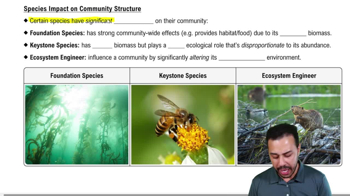<Image>
Burmese pythons (Python molurus bivittatus) are constricting snakes that can reach enormous sizes (up to 7 meters in length). They are native to Southeast Asia but were released into southern Florida from the pet trade. Many other snakes occur naturally in this area. Are the introduced pythons a problem?
Burmese pythons were first found in the wetlands of Everglades National Park in the 1980s, but only rarely. The accompanying graph shows what happened next. Most of the data are derived from chance encounters of pythons on roads (pythons are notoriously difficult to find). How would you describe the type of population growth in pythons from 2000 to 2008?
a. Logistic
b. Exponential
c. Linear
d. Logarithmic






